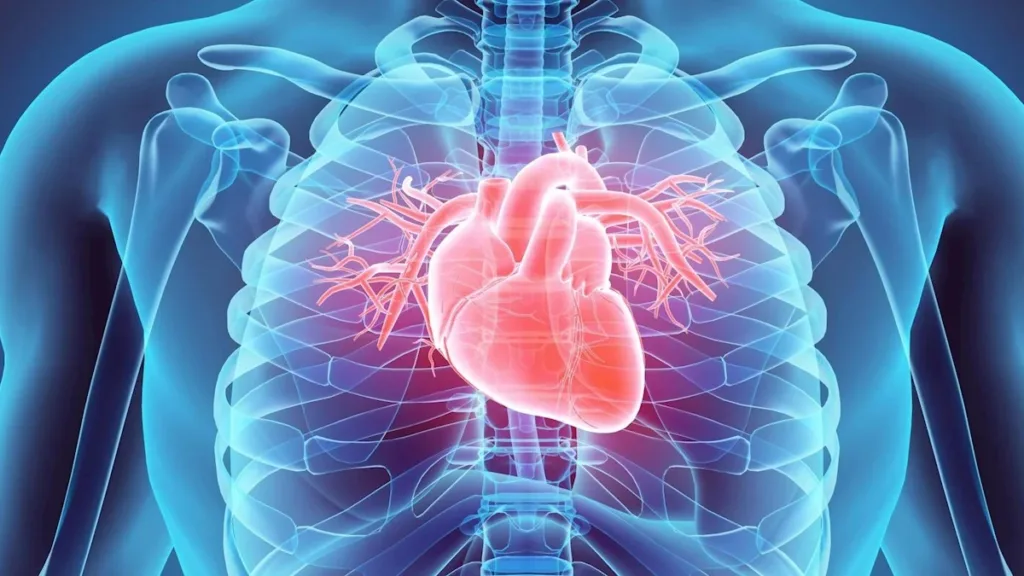Congestive Heart Failure
Cardiovascular diseases (CVDs) remain a leading cause of death globally, accounting for approximately 31% of all recorded deaths worldwide. Cardiovascular system diseases refer to conditions that affect the heart and blood vessels, including coronary artery disease, congestive heart failure, arrhythmias, and stroke. Fortunately, many treatment options exist to manage these diseases, and preventing them from occurring in the first place is attainable.
Treatment of Cardiovascular System Diseases
Medications play a crucial role in the management of CVDs. Antihypertensive drugs, such as ACE inhibitors and calcium channel blockers, reduce high blood pressure, a leading risk factor for CVDs. Anticoagulants and antiplatelet drugs, such as aspirin and clopidogrel, prevent blood clots from forming. Cholesterol-lowering medications, such as statins, reduce the buildup of cholesterol in blood vessels, reducing the risk of developing CVD and congestive heart failure. Beta-blockers and calcium channel blockers are used to treat heart rate and reduce the workload of the heart, improving its function. Diuretics reduce fluid buildup, which can help reduce blood pressure.
Surgical Interventions
In severe cases, surgery may become necessary. Angioplasty and stenting, for instance, are used to open narrowed or blocked blood vessels. Coronary artery bypass grafting (CABG) reroutes blood around a blocked artery to maintain blood flow to the heart. Heart valve repair or replacement and implantable cardioverter-defibrillator (ICD) placement may also be necessary. A heart transplant is a final option for those with significant heart damage or failure, but it is a complex procedure.
Cardiac Rehabilitation
Cardiac rehabilitation programs are specifically designed to help individuals recover from CVDs and manage risk factors associated with them. Exercise training, education and counseling, and emotional support are all integral components of cardiac rehab programs. These interventions can help reduce symptoms and improve overall quality of life. Although CVDs can be serious and life-threatening conditions, with proper treatment and management, individuals with these diseases can lead long and healthy lives.
Lifestyle Modifications
Apart from medications and surgical interventions, lifestyle modifications are essential in the management of CVDs. A healthy diet, regular exercise, smoking cessation, weight management, and stress reduction can significantly reduce the risk factors associated with CVDs. Cardiac rehabilitation programs offer a range of interventions, including physical exercise training, education and counseling, and emotional support, to help individuals recover from heart-related medical procedures.
Prevention of Cardiovascular System Diseases
Preventing CVD involves the adoption of healthy lifestyle practices. A balanced diet consisting of fruits, vegetables, whole grains, and lean proteins, coupled with regular physical activity, can significantly lower the risk of developing CVD, Congestive heart failure. Avoiding tobacco use, limiting alcohol consumption, getting adequate sleep, and stress management are essential preventive measures.
Blood Pressure Management
High blood pressure is a silent killer and requires monitoring and management. Regular blood pressure checks, medication adherence if necessary, and salt intake reduction can help prevent high blood pressure and reduce the risk of developing CVD.
Cholesterol Management
Regular cholesterol screenings, a healthy diet low in saturated and trans fats, and medication, if necessary, can reduce the risk of developing CVD. High cholesterol is a major risk factor for CVD. A healthy diet, regular exercise, and medication if needed, can help reduce cholesterol levels.
Diabetes Management
Managing diabetes is essential for preventing CVDs. Blood sugar monitoring, a healthy diet, weight management, regular exercise, as well as medication, if necessary, are all crucial components that can help prevent diabetes. Regular medical check-ups, monitoring blood pressure, cholesterol, and blood sugar levels, evaluating risk factors, and early detection of CVDs are vital preventive measures.
Regular Medical Check-ups
Regular medical check-ups with a healthcare provider can help identify risk factors associated with CVDs, including high cholesterol and blood sugar levels, smoking status, and obesity. Early detection of CVDs is essential to reduce the risk of serious complications. Getting vaccinated against illnesses such as influenza and pneumococcal pneumonia can also help prevent CVDs.
By taking the necessary preventive measures, adopting healthy lifestyle practices, and engaging in regular check-ups with a healthcare provider, individuals can significantly reduce their risk of developing CVDs. With proper management and prevention strategies in place, people can lead longer, healthier lives.
Stress Reduction Techniques
In addition to the above-mentioned lifestyle modifications, stress reduction techniques such as yoga, meditation, and breathing exercises can also help reduce the risk of CVDs. Regularly engaging in these activities can promote relaxation and improve overall well-being.
Regular Physical Activity
Regular physical activity is essential for preventing CVDs. Regular aerobic exercise can help reduce the risk of cardiovascular events and improve overall health. Aiming for at least 30 minutes of moderate-intensity physical activity, such as walking or cycling, every day can greatly reduce the risk of developing CVD.
Regular Screening and Early Intervention
Regular screening for CVD is essential to identify and treat the disease early. Screenings such as electrocardiograms, echocardiograms, and stress tests can detect cardiovascular diseases problems before they become severe. Early intervention by a healthcare provider can help reduce the risk of developing CVDs or limit the further progression of the disease.
CVDs are a leading cause of mortality worldwide. Still, interventions such as medications and surgical procedures, along with lifestyle modifications and preventive practices like regular medical check-ups, can help manage the disease and reduce the risk of it developing in the first place. Emphasizing the importance of treatment and prevention, encouraging individuals to adopt a heart-healthy lifestyle, and highlighting the significance of regular medical check-ups remain critical for reducing the global burden of CVDs.

